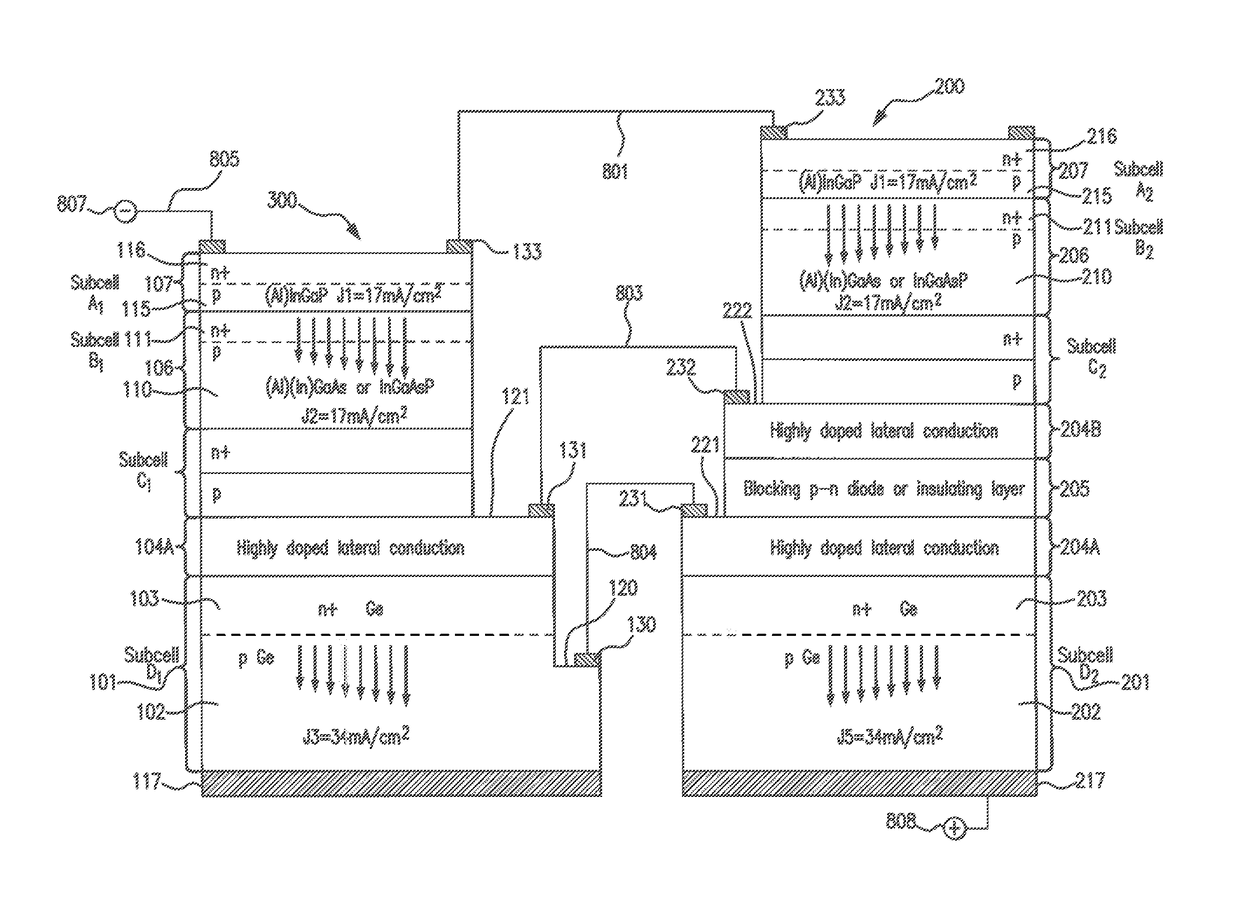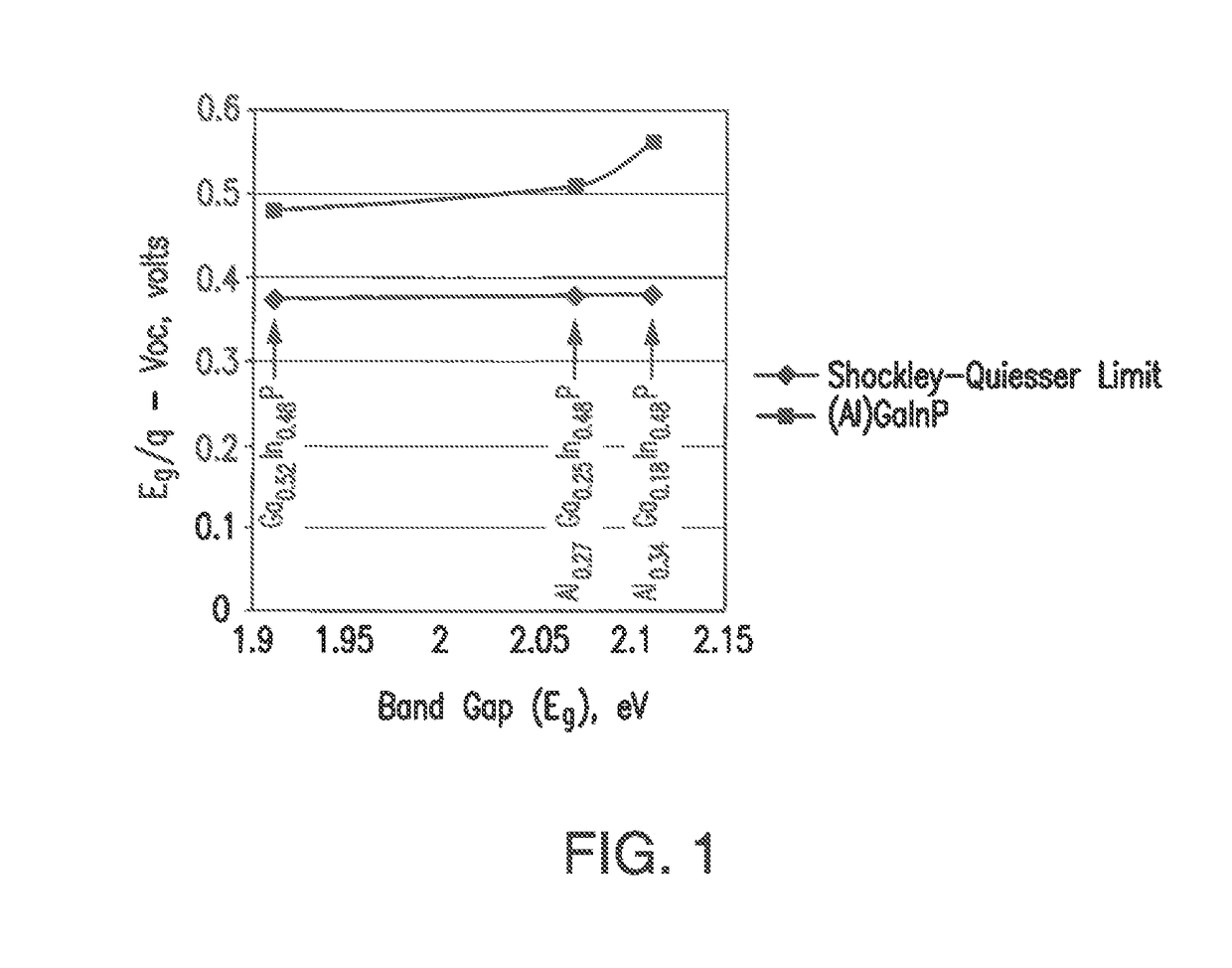Multijunction solar cell assembly for space applications
a solar cell and multi-junction technology, applied in the direction of sustainable manufacturing/processing, climate sustainability, semiconductor devices, etc., can solve the problems of increasing power out or solar cell efficiency, increasing the cost of solar cell assembly, and prone to being more complex to manufacture, etc., to achieve the effect of increasing photoconversion efficiency
- Summary
- Abstract
- Description
- Claims
- Application Information
AI Technical Summary
Benefits of technology
Problems solved by technology
Method used
Image
Examples
first embodiment
[0129]Turning to the fabrication of the multijunction solar cell assembly of the present disclosure, and in particular a five-junction solar cell assembly, FIG. 2A is a cross-sectional view of a solar cell assembly comprising two four junction solar cell subassemblies 100 and 200 after several stages of fabrication including the growth of certain semiconductor layers on the growth substrate, and formation of grids and contacts on the contact layers of the semiconductor bodies, and interconnection of the two subassemblies 100 and 200.
[0130]As illustrated in FIG. 2A, similar to that presented in related application Ser. No. 15 / 213,594, a first solar cell subassembly 100 includes multiple solar subcells in a tandem stack. In the illustrated example, the subassembly 100 includes an upper first subcell 107 (Subcell A1), a second middle solar subcell 106 (Subcell B1) disposed adjacent to and lattice matched to the upper first subcell 107, a third middle subcell 108 (Subcell C1), and a bot...
second embodiment
[0152]Turning to the fabrication of the multijunction solar cell assembly of the present disclosure, and in particular a five-junction solar cell assembly, FIG. 2B is a cross-sectional view of a solar cell assembly comprising two four junction solar cell subassemblies 300 and 200 after several stages of fabrication including the growth of certain semiconductor layers on the growth substrate, and formation of grids and contacts on the contact layers of the semiconductor bodies, and interconnection of the two subassemblies 300 and 200.
[0153]The second embodiment depicted in FIG. 2B includes a left subassembly 300 which has a sequence of layers which is substantially identical to subassembly 100 of FIG. 2A, except that layers 105 and 104B are omitted, while the right subassembly 200 depicted in FIG. 2B is identical to subassembly 200 of FIG. 2A. Therefore in the interest of brevity of this disclosure, the description of the identical layers in left subassembly 300 and right subassembly...
PUM
 Login to View More
Login to View More Abstract
Description
Claims
Application Information
 Login to View More
Login to View More - R&D
- Intellectual Property
- Life Sciences
- Materials
- Tech Scout
- Unparalleled Data Quality
- Higher Quality Content
- 60% Fewer Hallucinations
Browse by: Latest US Patents, China's latest patents, Technical Efficacy Thesaurus, Application Domain, Technology Topic, Popular Technical Reports.
© 2025 PatSnap. All rights reserved.Legal|Privacy policy|Modern Slavery Act Transparency Statement|Sitemap|About US| Contact US: help@patsnap.com



